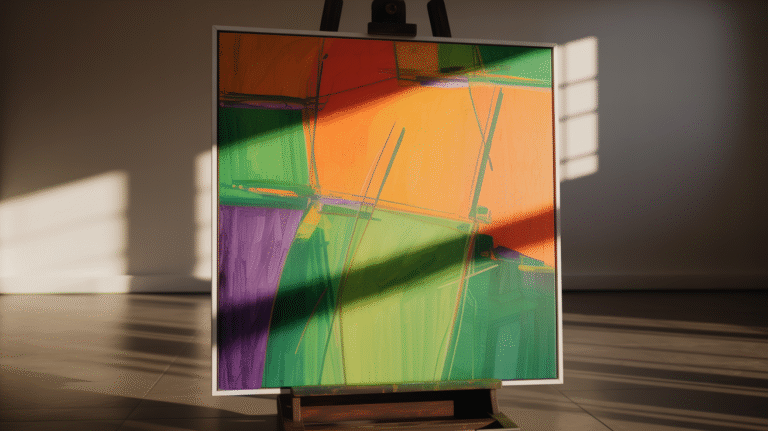You might have noticed that throughout history, people have continuously engaged in creating art. Have you ever wondered what motivates them to invest time and effort in making art? There are many factors that contribute to this longstanding tradition, providing fascinating insights into human behavior and creative expression.
People Make Art
Art involves expressing oneself, connecting with others, and exploring new world aspects. For many, art is a way to communicate emotions, thoughts, and ideas that might be difficult to convey through words alone. It’s a language that transcends cultural and linguistic barriers, allowing us to share our innermost feelings and experiences with others source.
In addition to emotional expression, art also has historical and cultural significance. Throughout time, artwork has been used to document important events, mark religious rituals, and preserve cultural traditions source. Engaging in artistic activities allows you to connect with your ancestors, learn about diverse cultures, and develop a deeper understanding of the human experience.
Purposes and Functions of Art

Self-Expression and Emotional Release
Art allows you to express your emotions, thoughts, and experiences. You can channel your feelings through various mediums, creating a tangible representation of what you’re going through. This process can be deeply therapeutic. For example, painting can be a way to release stress and anxiety. Additionally, poetry can help you articulate complex emotions, while music allows you to express your thoughts and feelings through a unique combination of sounds and rhythms.
Social and Cultural Background
Another important function of art is its ability to reflect and critique society and culture. Artists can raise awareness about social issues, challenge established norms, and stimulate conversations through their work. Take, for example, street art, which often conveys powerful messages about social or political issues. By doing so, artists can inspire their audience to think critically about the world around them and potentially incite change.
Aesthetic Pleasure and Beauty
Art brings beauty into our lives and serves as a source of aesthetic pleasure. It brightens our surroundings, evokes strong emotions, and stirs our imagination. Artworks can be breathtaking, making us feel more connected to the world. We celebrate different styles, mediums, and techniques, which creates a rich and diverse tapestry of artistic expression.
So, the next time you find yourself immersed in a painting, moved by a piece of music, or inspired by a captivating dance, remember that you’re experiencing art’s many purposes and functions. Art is a vessel for self-expression, social commentary, and the celebration of beauty – it deeply enriches our lives and strengthens our connection with the world around us.
Effects and Influences of Art

Inspiration and Creativity
Art has a powerful effect on your brain, sparking inspiration and creativity. Making art helps bring out your inner self-expression, and, in turn, you inspire others. This is because art is linked to our emotions, enabling us to connect and empathize with others on a deeper level. So, when you engage in artistic activities, you benefit and contribute to a ripple effect of inspiration that spans your community and the world.
Educational Value
Art is widely recognized for its educational value. It has been an integral part of human history and culture. Think about the art from ancient civilizations found in textbooks – illustrating how societies used art as a visual tool for communication and learning. Additionally, art helps enhance cognitive skills, promoting problem-solving abilities and increasing understanding of complex subjects.
Here is a summary of art’s educational value:
- Visual communication tool
- Enhances cognitive skills
- Promotes problem-solving abilities
- Increases understanding of complex subjects
Therapeutic and Healing Power

Lastly, let’s explore the therapeutic and healing power of art. Many people turn to making art as a form of therapy, allowing them to express emotions healthily. Research has shown that creating art can help reduce stress, boost overall mental health, and provide a healing effect for individuals. So, making art is about the final product and the process of creating, which can be a truly therapeutic experience.
In conclusion, the effects and influences of art remind you that making art is an important aspect of humanity. Engaging in creative activities helps you feel inspired, educated, and healed while enriching the lives of those around you. Embrace your inner artist and experience the transformative power of art firsthand.
Why make your art? Please share your opinion in the comments.
Why do people enjoy art?
People enjoy art for its aesthetic appeal, emotional resonance, intellectual stimulation, and ability to convey and evoke deep human experiences and perspectives.
What inspires artists most?
Nature, emotions, social issues, personal experiences, history, culture, and the work of other artists often inspire artists.
What are the seven purposes of art?
The seven purposes of art are to express emotion, communicate ideas, tell stories, beautify spaces, explore the nature of perception, commemorate events or rituals, and provoke thought or action.







[…] of artistic expression, have you ever wondered what truly defines art and the essence of creativity1? From the timeless masterpieces that have captivated generations to the avant-garde works that […]